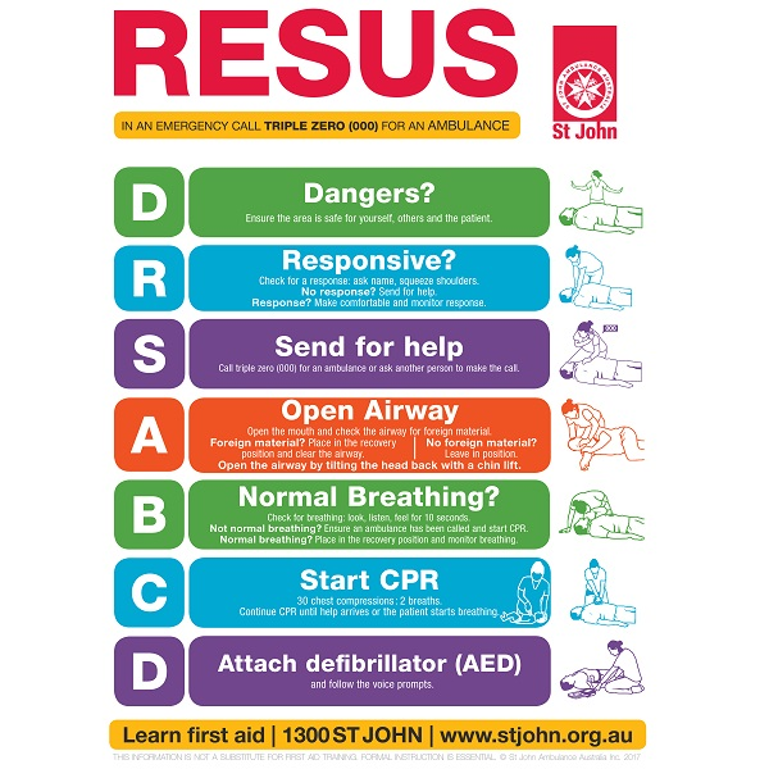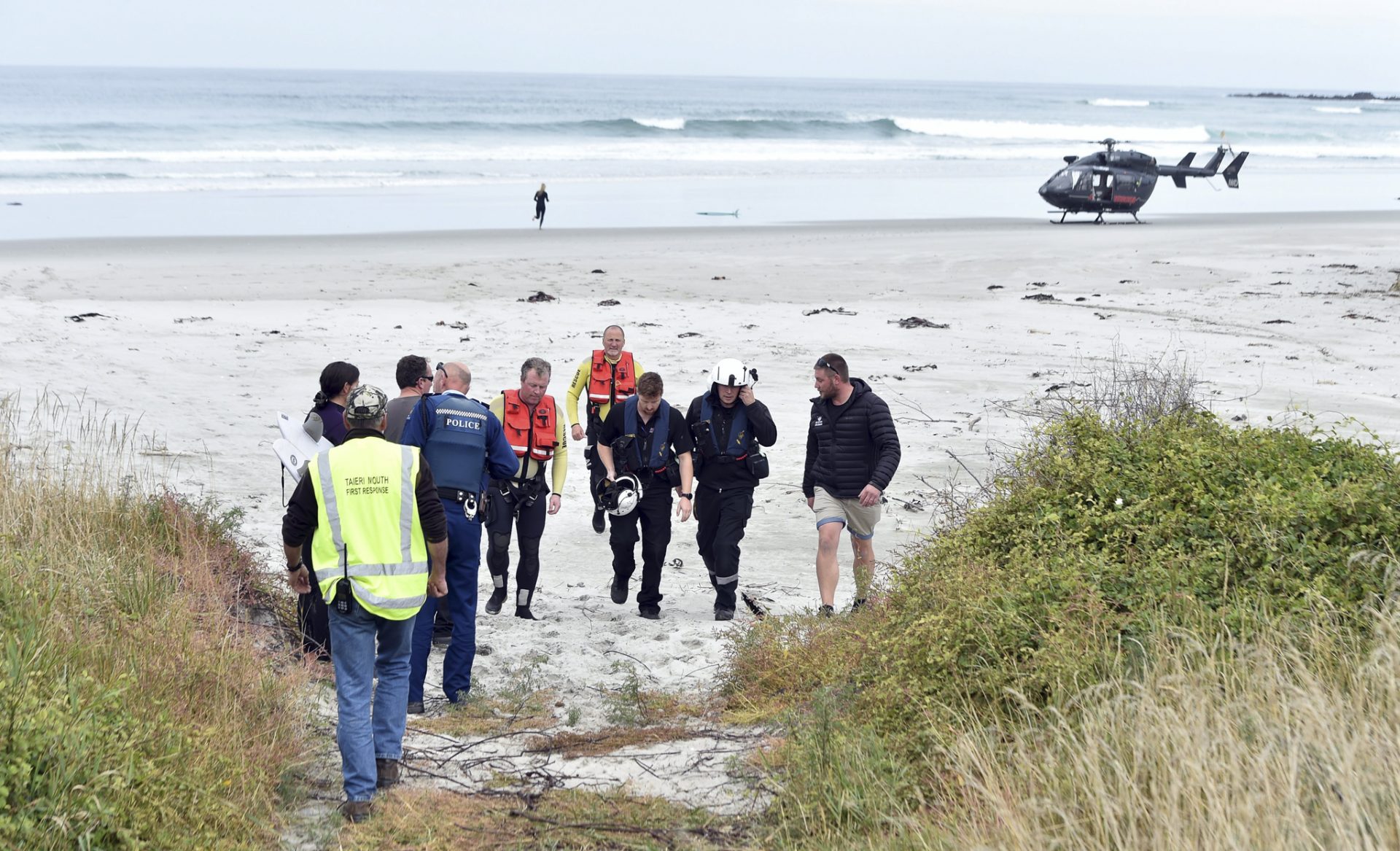The raw story behind the Taieri Mouth drowning tragedy of April 2021 and the team of surfing doctors who discovered the fateful capsize. Doctor Will Allen takes us back to a day that still haunts him – but a day that has inspired him to teach other surfers to save lives.
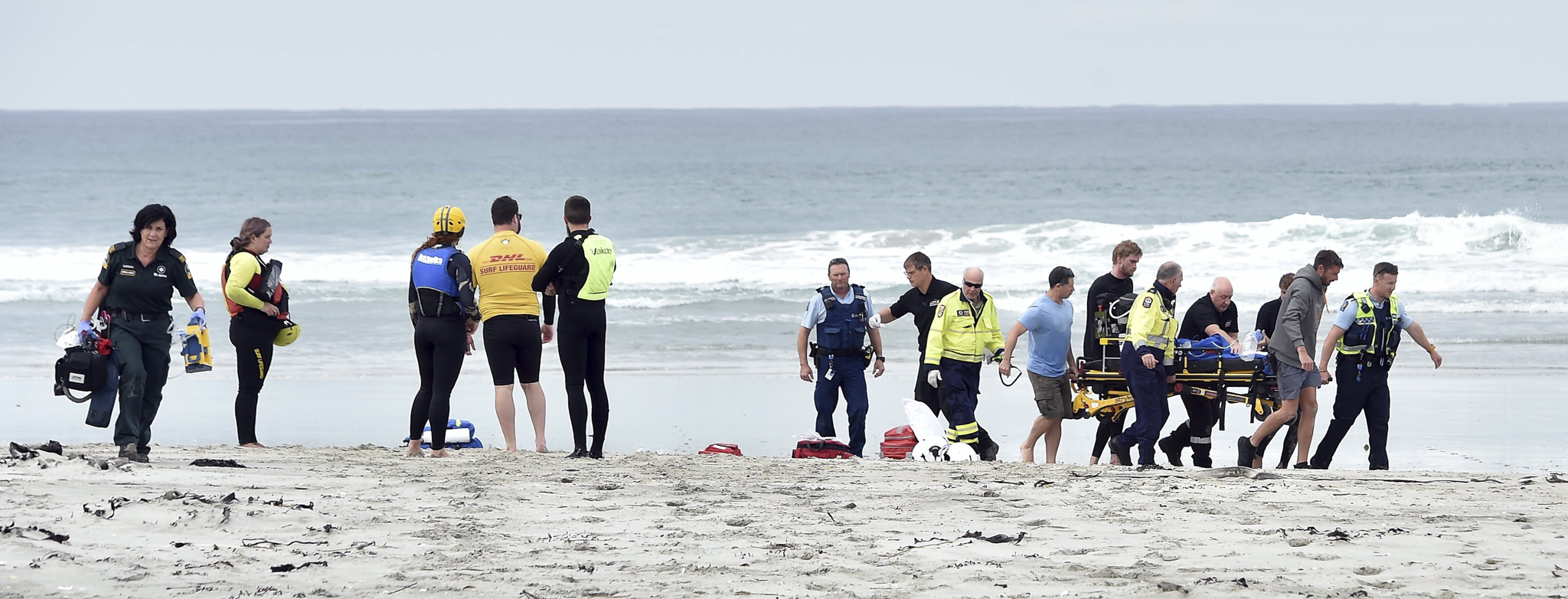
“When we least expect it, life sets us a challenge to test our courage and willingness to change; at such a moment, there is no point in pretending that nothing has happened or in saying that we are not yet ready. The challenge will not wait. Life does not look back.”
Paulo Coelho
My mother died in 2011. I was nineteen. A family friend reassured me, “there are a few things in life you never get over, you just gotta learn to sit with them”. I’d not seen death or CPR before, and it was quite the introduction. I vowed to surf more.
His words stayed with me. Working as a doctor, shit happens and I have had to call upon this ageing wisdom a handful of times since. I kept my promise, I surfed more, a lot more. Waves led me to emergency departments in Cornwall, South Africa’s Eastern Cape, and now here, an intensive care unit on the South Island of New Zealand.
The 3rd of April 2021 was always meant to be a defining moment ever since I signed up on impulse to the 2021 South Island Surf Champs a week prior. My girlfriend Michaela Jones and I were on a warmer water exploration of the North Island and had lucked into swell in Taranaki before heading home to Dunedin. The event was to be held at St Clair, a spot I checked every day from my bedroom window.
By 2pm on the day of the contest I was nowhere near the beach. I was in the hospital’s emergency department, still in my wetsuit. I had flown in with the paramedics by helicopter and a two-year-old child was fighting for her life.
I grabbed a few paper towels and went to dry the floor beneath my wetsuit. At that moment both my hamstrings went into uncontrollable spasm. The nurse on the other side of the resus room rushed to my aid.
“I’ve got that, don’t worry Will, get yourself showered. You look like shit.”
Without too much of a care for the double-takes of passers-by I headed for the fifth floor and the ICU staff showers. I cranked the knob to full heat and waited for steam to encompass the cubicle. A minute later I stepped in, peeled off my wetsuit and wept.
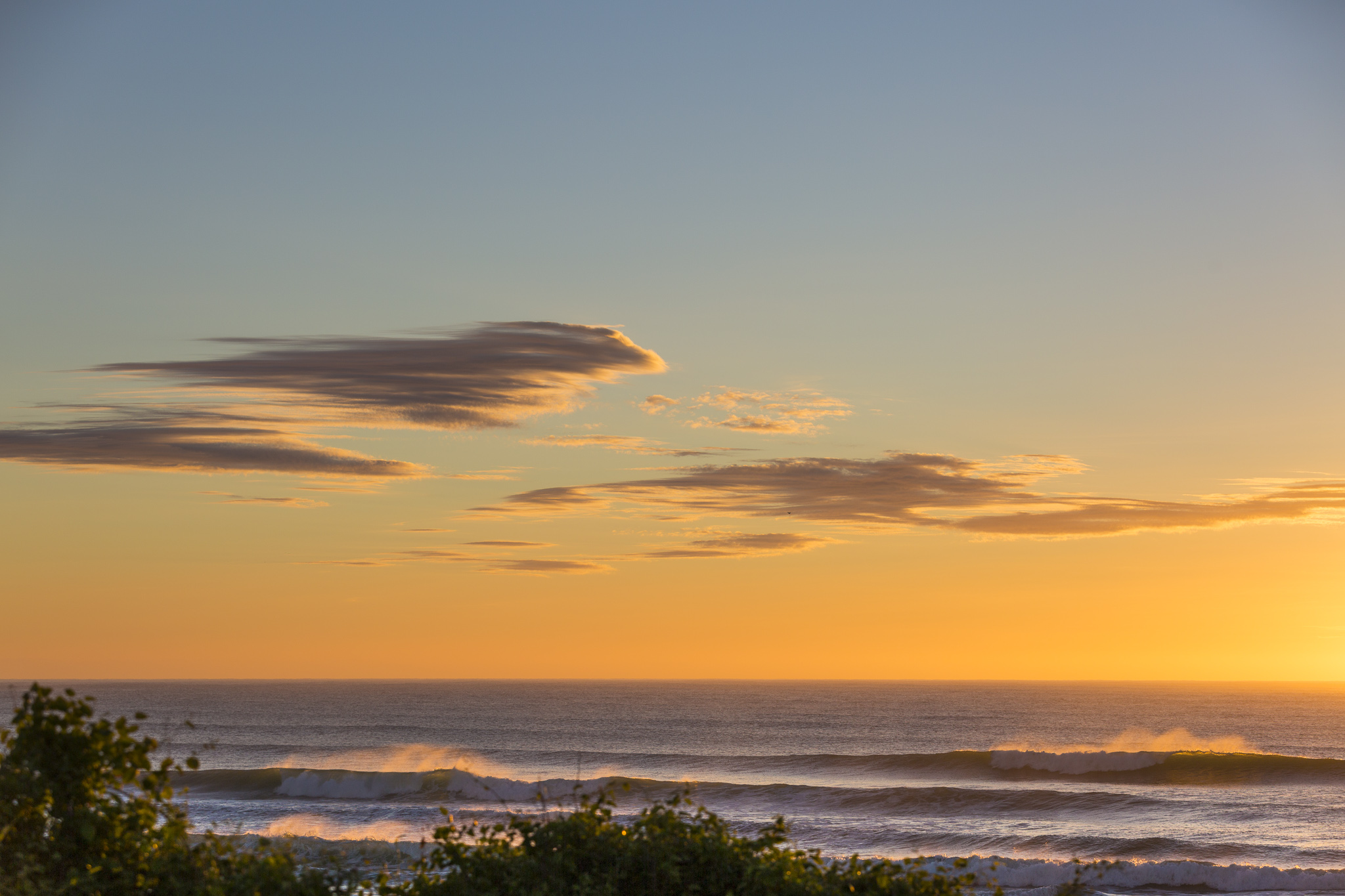
Fingers of sunlight crept over the Otago Peninsula a few kilometres down the beach. I was in the third heat of the day and was next up. I passed Michaela my tea and wrestled a blue rash vest over my head. The tide was full and the 15-second groundswell smacked into the esplanade wall. Spray pulsed over the promenade to the delight of some surf groms. My goal quickly changed from winning the heat to not finishing up on Kook Slams’ Instagram account, a victim of the greasy steps before me.
A minute or so to go the beach tannoy jumped to life, “surfer in blue, you need a four point one to advance”.
A wave appeared, time for my own buzzer-beater moment. A dark green warbler stumbled through the backwash. The thing jacks up and the morning sun engulfs the lip. I turn and paddle, rising to my feet in accordance with that all-too-familiar drive of energy. I commit and make the drop … just, then set my line. I feel out the wave then straighten, pointing the nose of my board to the beach. There’s a slight hesitation – a quick nod to the gods – I dig my toenails into the wax and corner making my way up towards the lip. Timing everything, perfection unobtainable.
Dog walkers a few kilometres down the beach at St Kilda must have surely felt the shore breaks reverberation there, too. A ruler edged close-out pounded me straight into the sand and I surfaced close to those greasy steps. I had that same warm cuppa in my hands when the hooter went. Michaela mentioned something about taking part. My pro surf career was over 15 minutes after it began. We headed back for breakfast and exchanged a few laughs at my first-round flop.
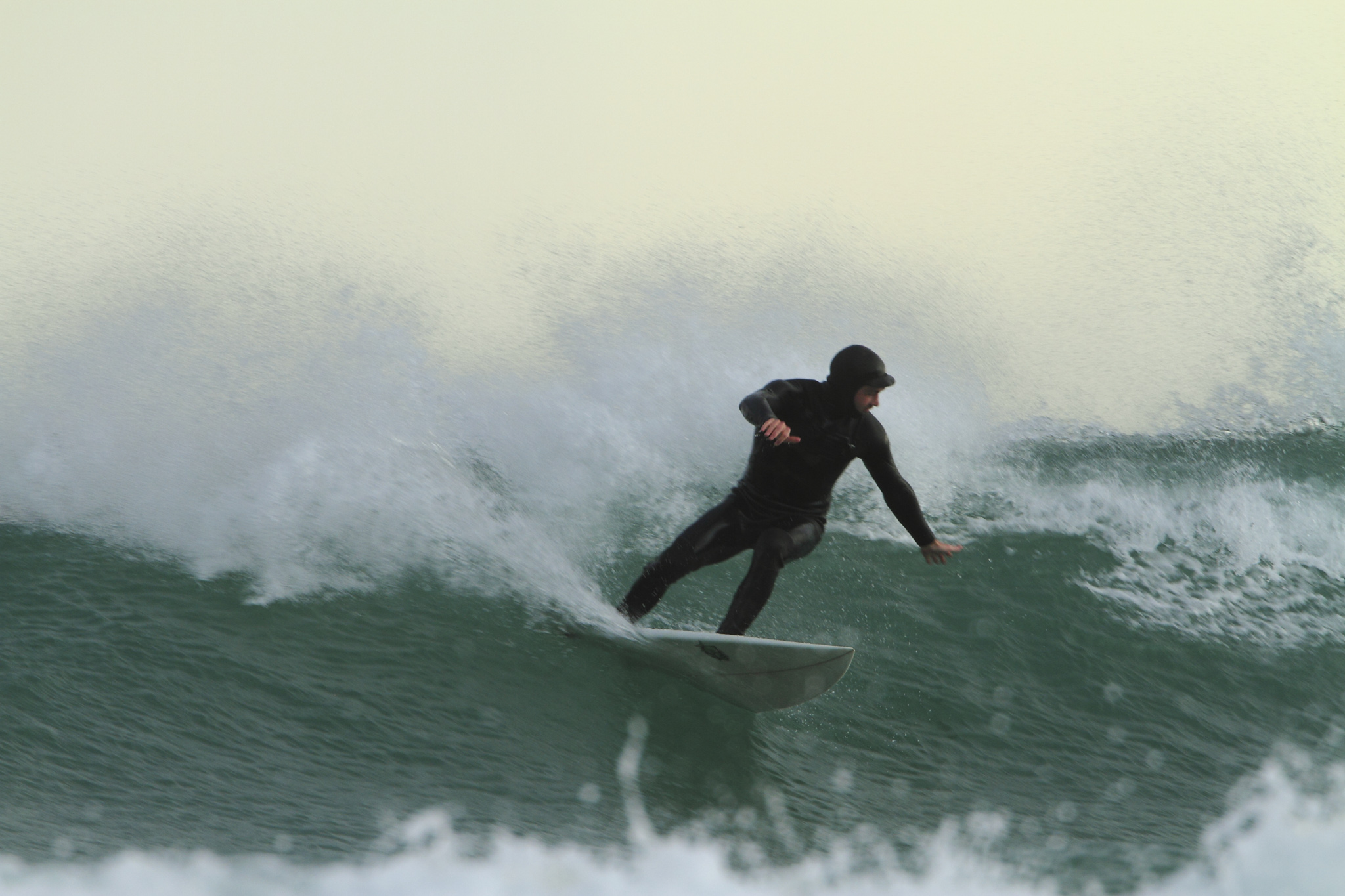
Working in Dunedin Hospital’s ICU wasn’t the only attraction for Will Allen. Photo: Rowan Klevstul 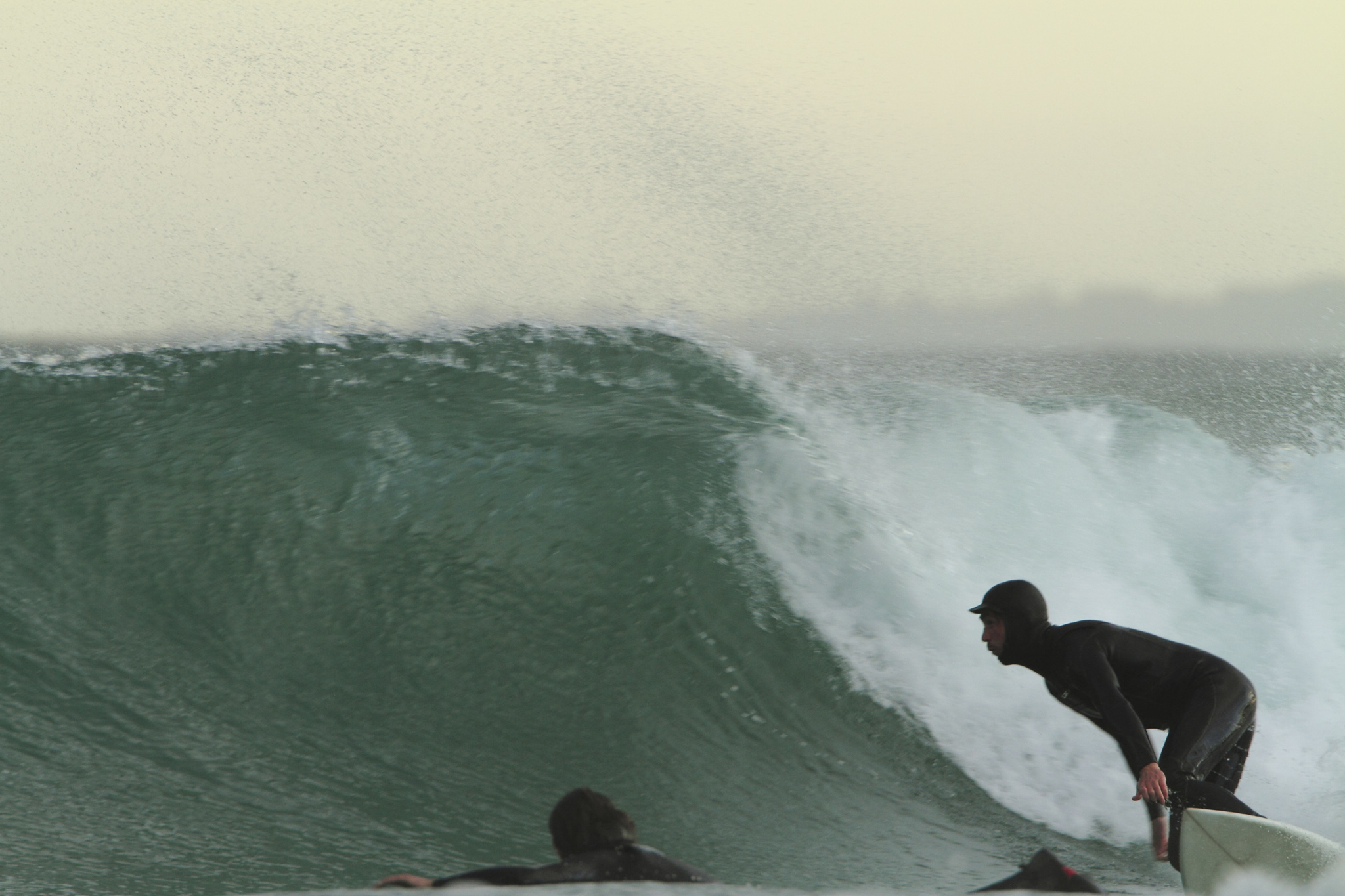
Will enjoying his after work surfs. Photo: Rowan Klevstul 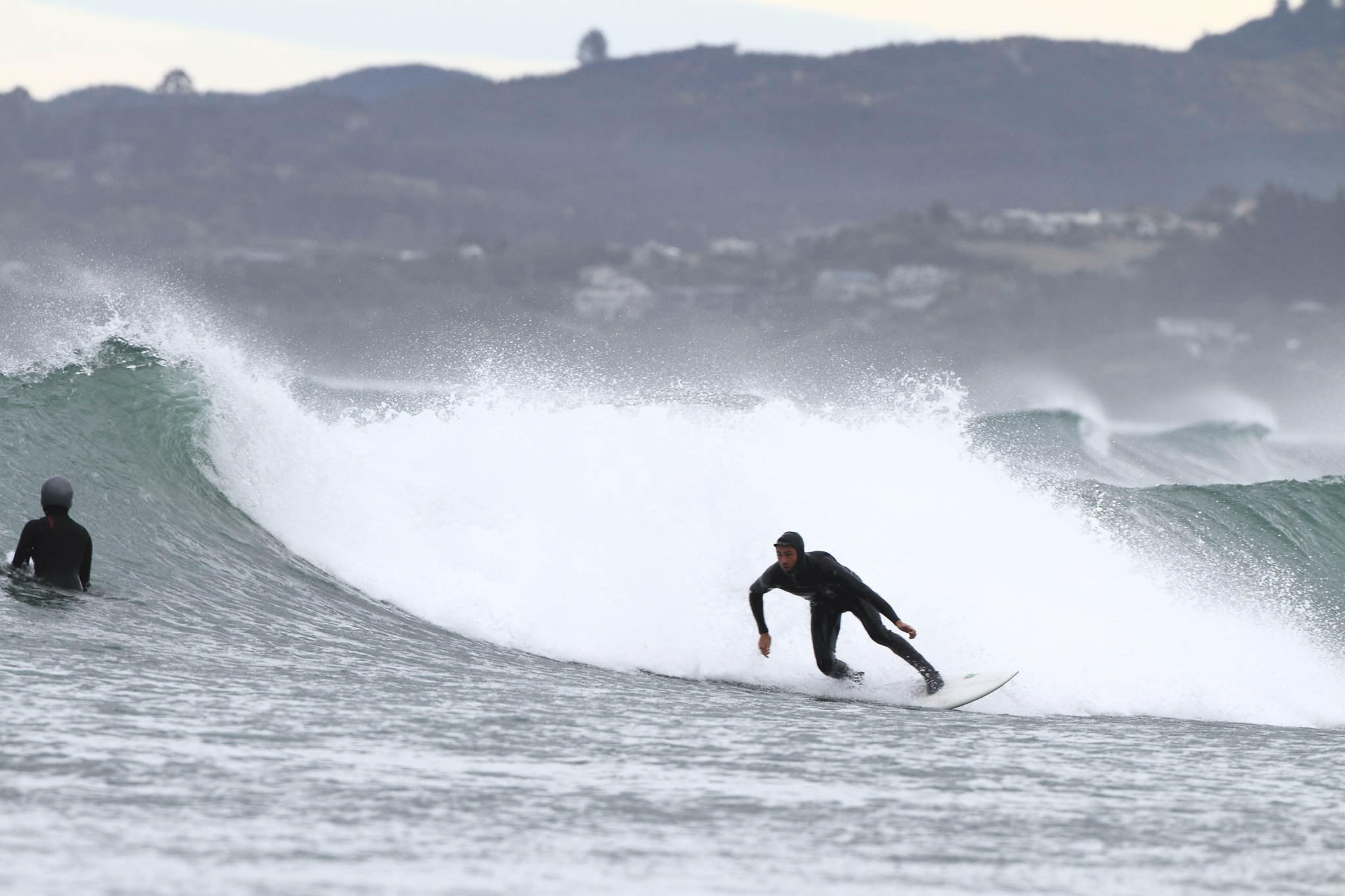
Will setting up. Photo: Rowan Klevstul 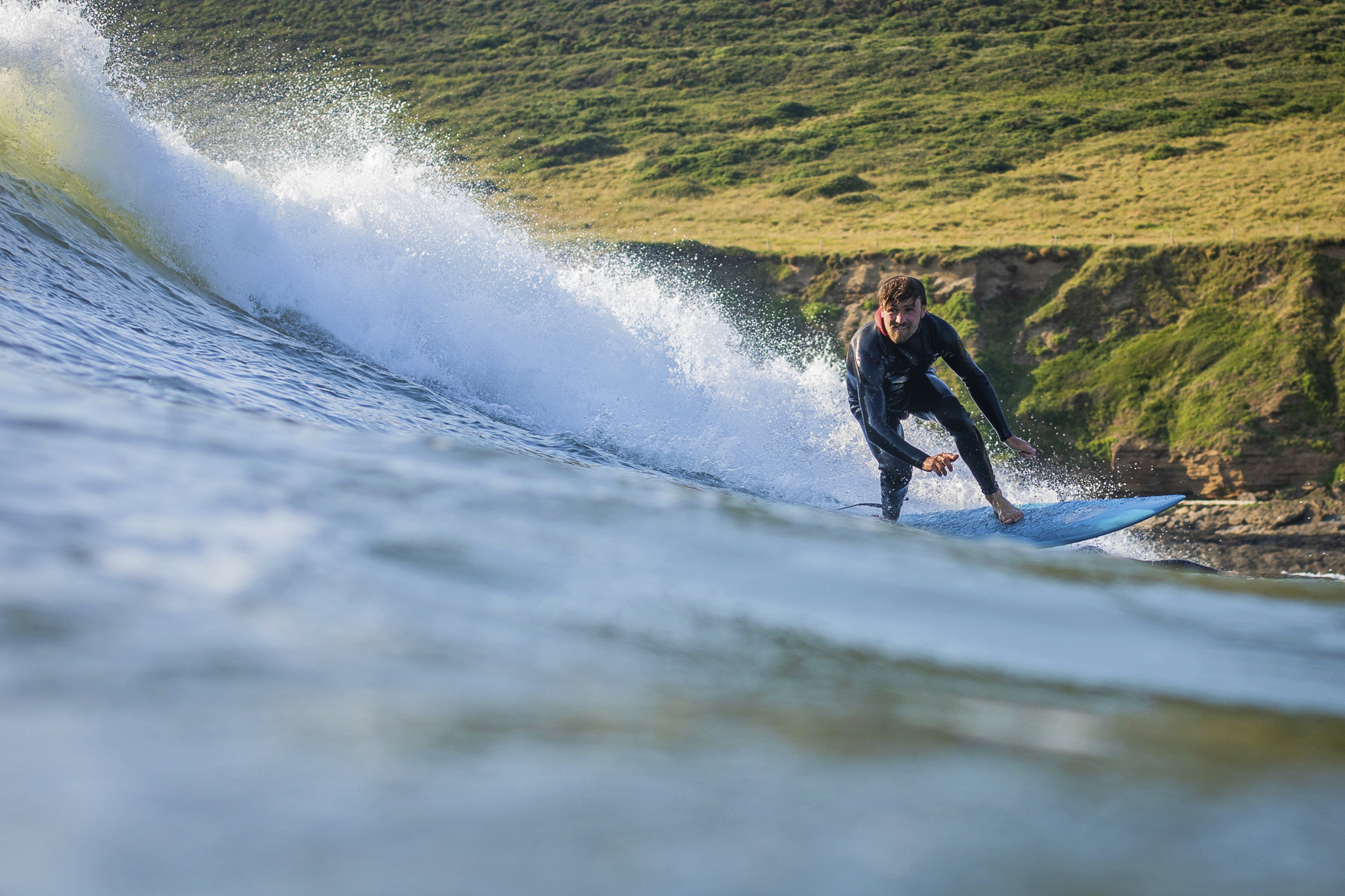
Will Allen on a runner back in the United Kingdom. Photo: Nick Corkill
Dunedin is a city with nearly as many surf spots as sea lions and, sitting at a latitude of 46° South, some sessions can certainly put hairs on your chest. South easterly facing, it cops a wide range of swell from the southwest – the roaring forties, all the way through to the north east – the direction of my daily prayers. The swell that day was from the roaring 40s. As the old sailors’ saying goes, “below 40 degrees south, there is no law; below 50 degrees, there is no God”. I surely underestimated the swell angle given the afternoon we were about to have.
Evie Hall, a steezy longboarder and final year medical student from Raglan, and her dog Elfie (yes, confusing), rocked up at ours just before midday. Along with our 6’7” man mountain of a housemate, James Welchman, also a doctor, the four of us convoyed south in two vans, a route we knew well.
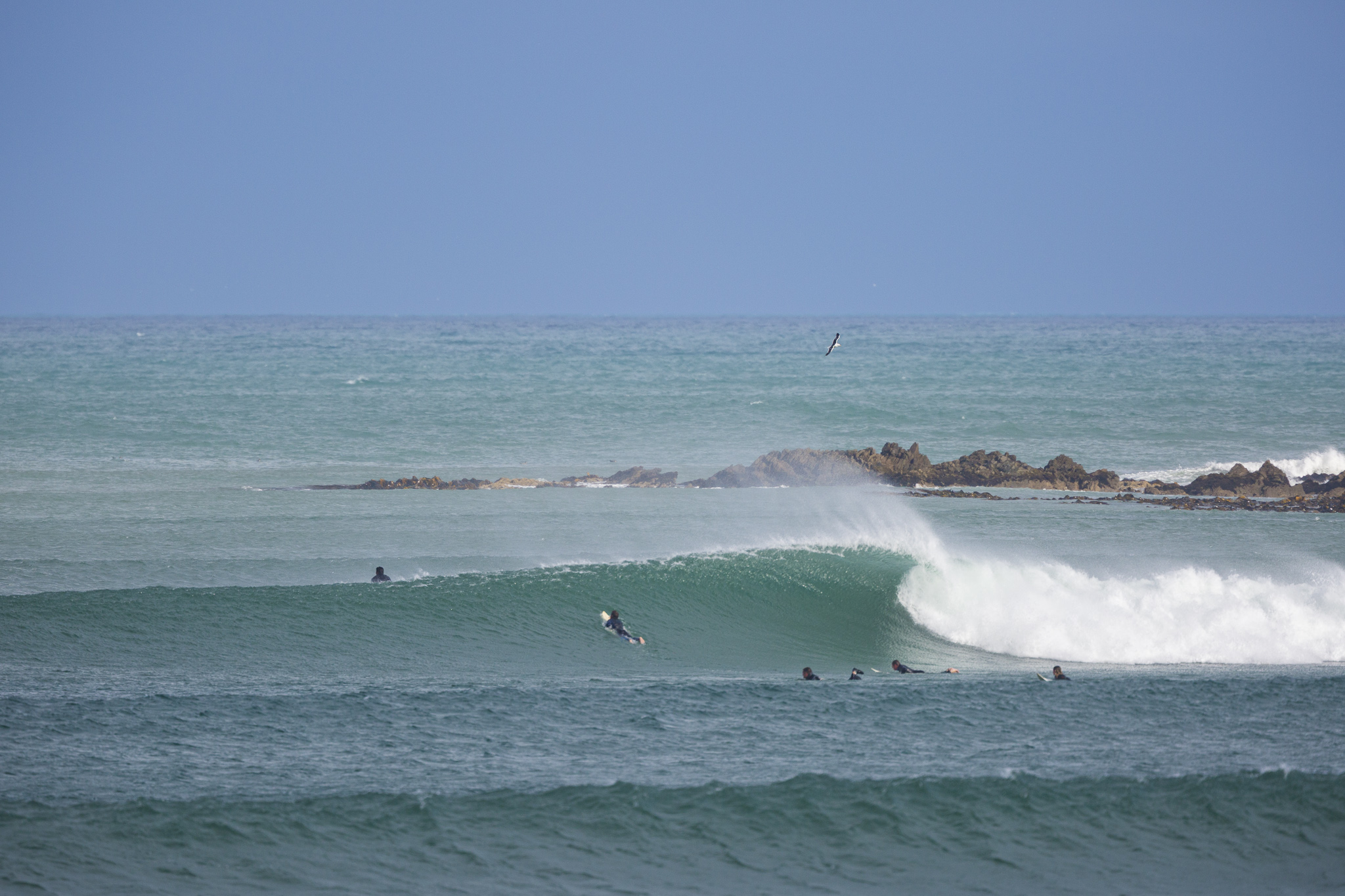
Taieri Mouth is a charming little windswept fishing settlement on the banks of its namesake’s river about thirty kilometres south of Dunedin. Slap bang in front of the river mouth about one kilometre offshore is Taieri Island, a big lump of uninhabited rock easily seen from afar. This rock has been quietly siphoning silt north or south depending on its mood for thousands of years. Sediment is currently deposited northwards and a long, but fickle righthander exists on a special kind of swell. White pointers are supposed to regulate the line-up here, convenient hearsay for some locals.
Our two vans pulled into the gravel layby overlooking the sandbar. We weaved in between a couple of utes with their fishing rods stuck out the back like bayonets. I jumped out the driver’s side of the van, felt a whisper of breeze on my right cheek and fixed my eyes on the oncoming waves a few hundred metres offshore. No one was out. Size is difficult to ascertain from the layby as the wave breaks so far offshore, but it was definitely on.
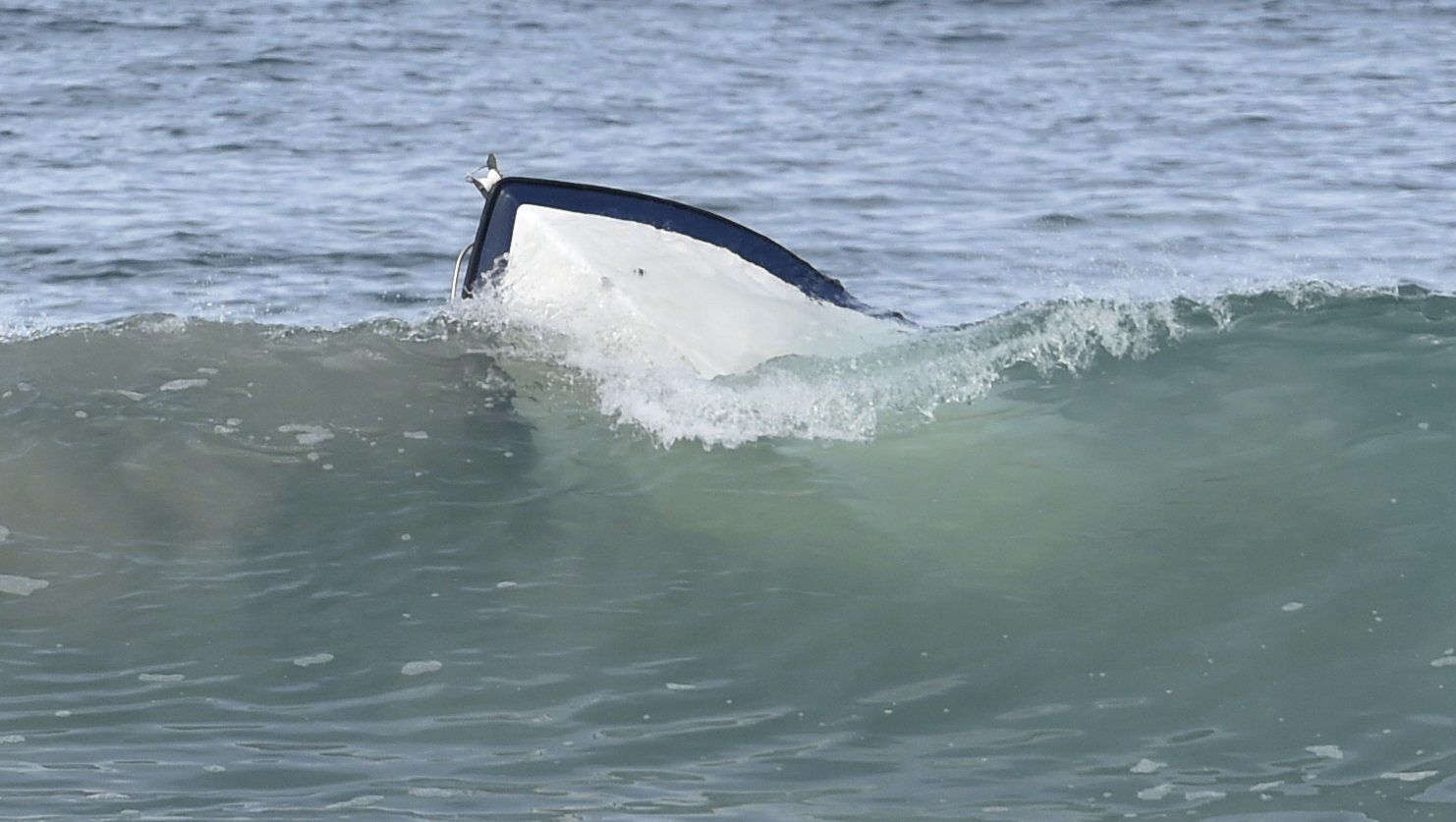
“What’s that?” Evie pointed north, down the beach.
We all reconfigured our stares. I could hardly even make it out.
“Looks like a big chunk of white plastic, like a table or something?” I said.
Eyes better than mine identified that it was an upturned fishing vessel, like a small tinny or similar. On closer inspection a few dark blobs were bobbing out there as well. A handful of salt-sprayed fishing folk watched on as we suited up and ran down to the beach with our boards.
Evie entered the water first heading for the lone dark blob a few hundred metres from the boat. Michaela and I made for the boat which was drifting slowly northwards in the impact zone taking punishment. The waves were relentless. James followed up 30 seconds behind us. The water was cold. I had an ice-cream headache after the first few waves washed through. I remember considering if they were in wetsuits. They weren’t.
We arrived to a scene of panic. The mother, alive and floating in her lifejacket 10 metres from the boat, and the father, clam-shelled onto the hull of the upturned boat. He slid down. We passed them our boards and they grabbed hold. Dad gave a frightened look back towards the boat, and on the far side I spotted her, a girl of no more than 12. She had just surfaced along with the boat after another dunking from a shoulder high wave. The wave reeled along the low-tide sand bar.
She let out a scream. All I could see were the whites of her eyes and the yellow of her life jacket. She was half under the boat, half out. Her face intermittently water boarded by the waves. She was stuck. I swam over while James escorted Mum and Dad to shore.
The girl’s lifejacket was jammed in something on the boat’s railing preventing her escape. She was in hell. Her mouth barely above the water at the mercy of the ocean, and the wretched boat kept dragging her down. Her screams were dampened by water rushing into her mouth.
“Close your mouth. You’re going to be okay. I promise. Just relax.”
I held up her head with one hand and began tugging on her life jacket fastenings. She was tied in tight.
“Wave!” Michaela yelled from about 10 metres away.
I gripped the girl and railing and we braced for impact. The wave drove us down.
We surfaced and I tried to free her.
“Wave!”
I continued fighting with the lifejacket.
“Wave!”
The girl’s screams stopped and she went limp. She was unconscious and not breathing. Her face drifted below the surface.
I pulled her head up, opened her mouth and gave her a quick breath. Changing tack, I sunk down just under the boat and tried unclipping the buckles of her lifejacket. Something I hadn’t considered whilst her legs thrashed about.
The lifejacket gave way and I pulled her down towards me. Her head and arms slid out of the lifejacket’s vice-like grip.
“Wave!”
I lost her.
I found her just below the surface in the foamy aftermath. Michaela was already there with my board. She’d been watching on, ready to rescue me if I got stuck or banged my head. A doctor and former-lifeguard herself, she had my back.
We shimmied the body onto the board.
Michaela took over.
“Kick Will, I’ll breathe.”
I paddled from the back of the board whilst Michaela blew air into the supine girl’s wet lungs.
“Wave!”
I flopped my body over hers and held tight. Michaela clamped her mouth shut.
“Ok, kick”
Michaela continued giving rescue breaths and cleared the white foam escaping from the girl’s mouth.
“Wave!”
We rode it a little.
We were through the worst of the impact zone and now had a seemingly endless lagoon of swirling murky chop to battle through. My legs grew tired.
Tears began streaking down Michaela’s cheeks.
“Look Will, she’s moving. She’s alive!”
The girl groaned, her eyes stayed shut.
Air and sea temperatures on the day of the rescue were around 12°C. Before falling in, the family’s body temperatures would have been around 37°C. On hitting the water it is likely they all experienced a cold shock response – a range of cardio-respiratory responses provoked by stimulation of cold receptors in the skin. An initial gasp and a period of rapid uncontrolled breathing ensue. The volume of this gasp is dependent on water temperatures. The colder, the deeper your breath. In these temperatures a victim will inhale around 3L of air. If this initial gasp is met with water, drowning can occur. The lethal dose of seawater on the lungs for an adult male is around 1.5L. Interestingly, the cold shock response can be blunted with repeated exposure and training in a very short period, and this appears to last at least a year.
Albeit weaker, there is another conflicting physiological process that occurs in those first few seconds – the mammalian dive reflex, an oxygen-conserving response that allows mammals to stay submerged for extended periods of time. On submersion apnoea is triggered and the heart rate slows.
After a few minutes immersed in cold water nerves and muscles begin to cool reducing dexterity, strength and one’s ability to swim. Deep muscles in the forearm can cool to 27°C in 10 minutes affecting strong and weak swimmers alike. The girl’s dad was clinging to the boat’s hull out of the water, a good move in regards to heat conservation. He would have cooled four to five times slower.
After 30 minutes core body temperatures really start to plummet. Below 35°C consciousness can be impaired, victims can become confused, aggressive, amnesic even. And below 30°C consciousness may be lost. The shivering response will cease at some point, a bad sign.

After a couple hundred metres of desperate swimming my feet felt the sand. We discarded the board and carried the girl through the waist-deep water. An off-duty policeman met us and helped us up the beach. He had rung the emergency services starting the all-important chain of survival. Critically unwell patients like the one laid before us in the sand do not make Hollywood recoveries in the field. Time to definitive treatment – getting to hospital – is the most important factor in the outcome for many patients, and nothing should delay this.
We’d moved the girl out of the water laid flat for an important physiological reason, to avoid a drop in blood pressure and subsequent loss of consciousness. Water has a higher density than air so when we are immersed in it a pressure difference is established, essentially squeezing us. Blood is shifted centrally from our peripheries which is good for maintaining flow to our vital organs in a survival situation. On extraction this pressure gradient is lost which risks a fast drop in blood pressure. Keeping victims horizontal at least counteracts some of the gravitational effects that would also play a role if moved in an upright position.
Members of the public rushed for blankets and warm clothes. Re-warming a hypothermic patient in the field is virtually impossible, but shouldn’t stop rescuers from removing wet clothes and covering and insulating a victim from the ground if possible. The aim here is to prevent further heat loss.
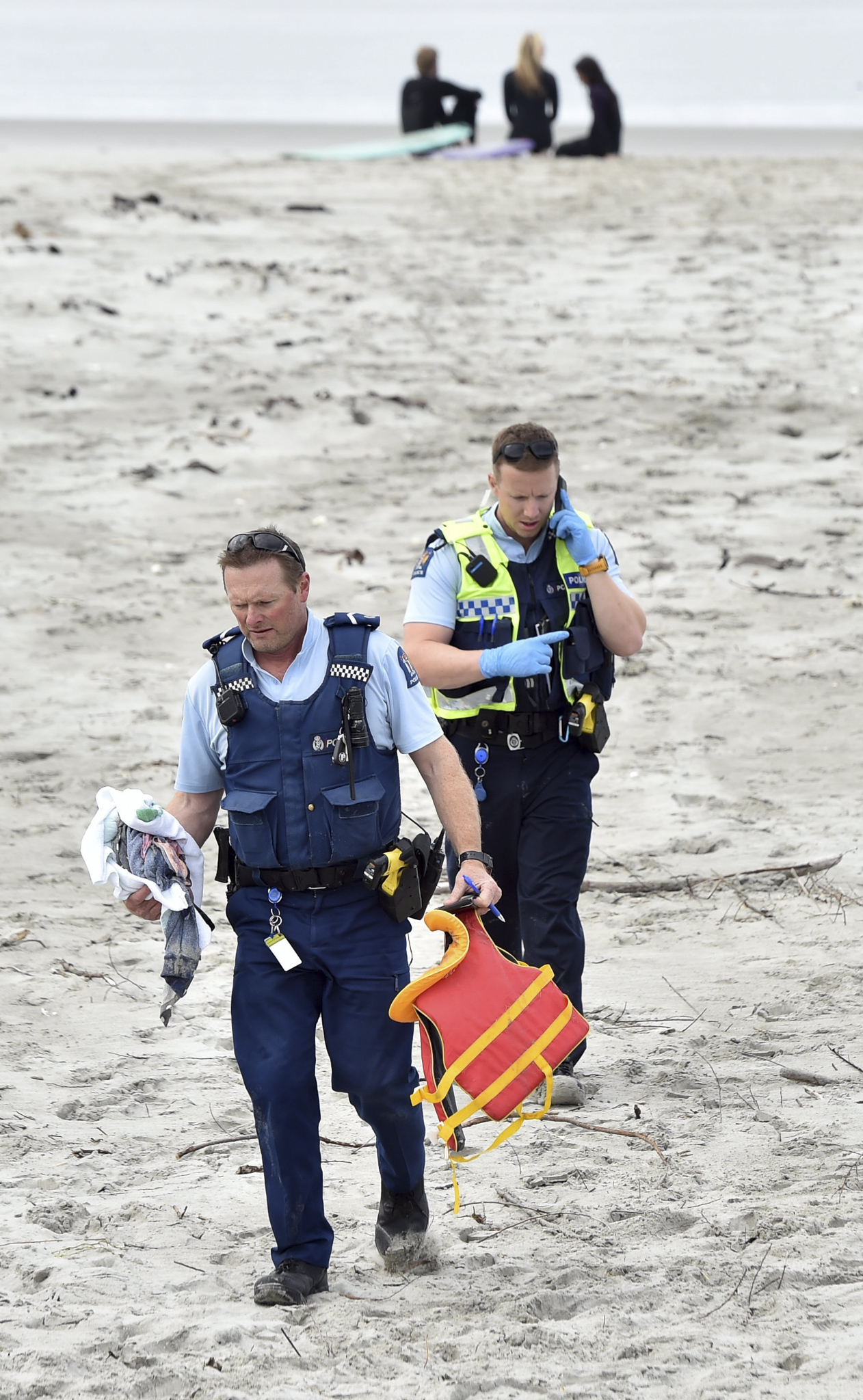
The police officer handed me the phone still connected to the emergency services.
“We have an 11- or 12-year-old girl drowning victim. She had a respiratory arrest of around three to five minutes. She is currently breathing for herself; cold and with a reduced level of consciousness.”
“How many other casualties do you know of?”
“Mum, Dad, Brother.” I said.
I could see a little boy Evie had rescued further down the beach. To my knowledge he was okay.
“Any others?”
“I don’t think so.”
I turned to Michaela and then out to sea. Something wasn’t right.
“Wait.”
I handed the phone back to the police officer.
Michaela tended to the girl in the recovery position, wrapping her up in blankets and making sure she didn’t aspirate on her own vomit. I ran back down the beach towards the shallows.
Dad was still in waist high water, he had Michaela’s board under his arm, his eyes fixated on the boat. He was swaying and incomprehensible when I reached him.
“Go in now!” I said.
I took the board from him.
“Go! Now.”
I directed him towards shore.
It was now clear, at least another child was out there. I paddled back out.
Between the waves I could see James and Evie already making for the boat. They knew. The hull came into clear view about 50 metres out. I saw Evie sitting on her longboard, James’s board resting next to hers. He was nowhere to be seen.
James surfaced next to the boat. Ten seconds later his feet slapped the water’s surface and he descended once more. Waves continued to break. I had no idea there was another victim.
I paddled harder.
I saw the yellow of a lifejacket breaking the surface, James’s arms followed beneath.
“Fuck.”
That was the bravest thing I’d ever seen.
Evie scooped up the yellow lifejacket and placed it on the board. She unbuckled it to reveal a mass of dark hair and a small body, a little girl around two years old. Evie scraped the hair backwards and began CPR using the heel of her right hand. On account of the child’s size only one hand was required. Evie stopped – James gave two breaths – Evie restarted.
I arrived. The child was ice cold and lifeless. We made for shore.
Between the thump of waves an engine screamed, a jet ski skittered towards us. The driver eased up on the throttle beside us and Evie climbed on. We passed her the little girl and I followed. We sped off just before another wave broke and James was left to swim in.
A helicopter flew overhead as we slid up the wet sand.
We ran up the beach towards the flashing lights, toddler in my arms. The paramedics rushed to meet us.
Soon James and the helicopter team joined us. I recognised those guys, we worked together on jobs flying patients between various hospitals in the South Island.
Between heavy breaths I recounted the story.
“She must have been down for 20 minutes.”
We continued CPR and I inserted an inflatable airway device to better control her airway. The paramedic passed James a small drill, a small hypodermic needle made the drill tip. There was no point looking for a vein, the toddler was stone cold. In emergency settings instead of going intra-venous (IV) you can access the bloodstream intra-osseously (IO) via the bone. He steadied his hand just below her right knee and the small electric motor reared to life. One of the paramedics stuck down the pads of an AED (automated external defibrillator). We stopped CPR and analysed the rhythm. Nothing.
“No shock advised,” said the crackly machine.
We continued CPR.
High-flow oxygen was streaming in each time I gripped the bag attached to her breathing tube. Her heart was being squeezed with each chest compression and now a bolus of adrenaline was hopefully exciting the muscle fibres of her heart.
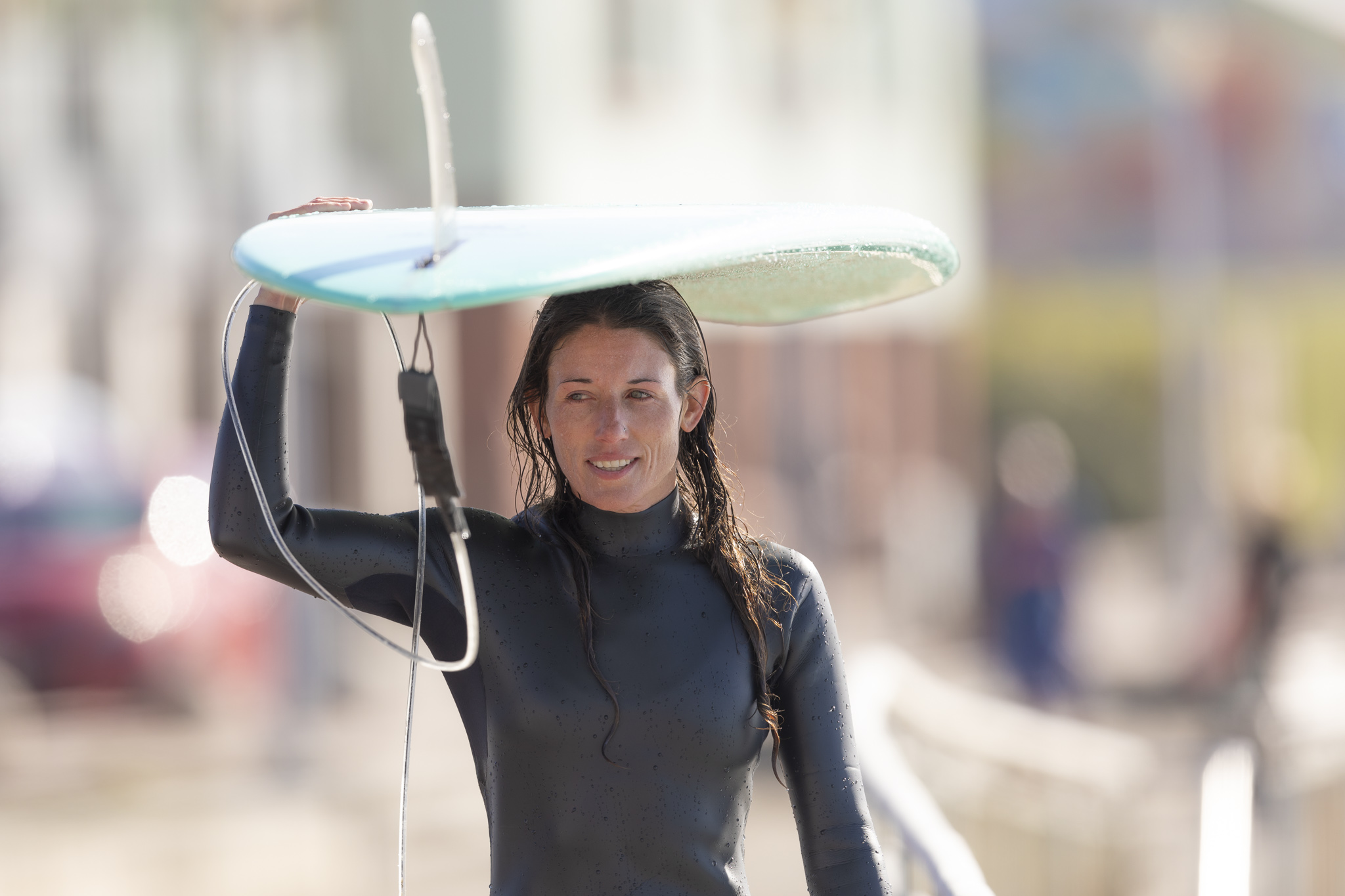
Drowning is the third leading cause of accidental death worldwide accounting for 360,000 lives every year. There are spikes in the under-fives and those aged between 15 and 25. Drowning kills more children than many high-profile diseases.
First there is panic and a struggle to stay above water, then irregular breathing and air hunger. Finally, an inspiratory reflex effort – the body has to breathe. Low oxygen levels occur as a result of two physiological mechanisms. Either the vocal cords clamp shut, a reflex laryngospasm, as water makes contact with the airways. Or, water rushes into the lungs washing away the surfactant layer – the soapy film that covers our air sacs. The air sacs collapse and make oxygen transfer to the blood nearly impossible. Whichever way, no oxygen is delivered to the vital organs and the spiral towards cardiac arrest and death begins.
Most of us can hold our breath at rest for say one minute, but when jumping into 10°C water in normal clothing this falls to about five seconds, but can even be as low as one second. This goes someway to explain those lung-bursting hold downs in the surf on a cold winter’s morning.
In cases of drowning a victim will first stop breathing, respiratory arrest, then progress to a cardiac arrest. The heart will stop beating as oxygen-rich blood is no longer circulating. Unlike in other causes of cardiac arrest, oxygen is the primary issue and needs addressing.
Once safe and on a stable surface, rescuers should commence uninterrupted chest compressions at a rate of 100-120/minute if the person is unresponsive and not breathing normally. Thirty compressions then two breaths, then repeat until help arrives. This is the case for all age groups as per Australian and New Zealand Committee on Resuscitation (ANZCOR). Compression should be about 1/3 the depth of the victim’s chest over the sternum, with two hands for adults, one or two hands in the under eights, and two fingers in infants. In-water rescue breaths are an advanced rescue technique and the priority should always be getting the patient to shore and safety.
Research suggests that the sooner basic life support is initiated the better the outcome.
Pete, the heli-paramedic, built like a brick shithouse, came and crouched next to me.
“Shall we think about moving forward to the heli?”
Five minutes later, Pete, Shane and I were at the rear entrance to the helicopter. I shimmied in alongside the stretcher holding the breathing tube steady and took a seat. We put on the headsets and continued CPR.
The rotor blades spun faster and faster, and soon we floated a matter of feet from the sand, then we were off. I glanced out the window and spotted my board floating out there, a brand-new Fishbeard, still un-surfed.
Things were not looking good; we hadn’t seen any electrical heart activity on the monitor. The line was stubbornly flat. She’d been under for a long time. I couldn’t help but wonder though, maybe she was stuck in an air pocket in the bow of the boat, breathing even. We didn’t know how long she’d truly been down for.
The waves looked small from up there. The afternoon light was flat, sea and sky blended grey on the horizon. Whenever I fly in the heli I always reflect on the peaceful Earth beneath me. There is calm and order that comes with distance, cars move slowly and waves break gently. From up there I couldn’t quantify the maelstrom of panic and death that had overcome me minutes earlier. I collected my thoughts and kept squeezing the bag. Shane continued chest compressions. We were approaching the 25-minute mark with resuscitation attempts.
As doctors we like to look for the exception not the rule, the rarities, it’s what keeps it interesting. We do presentations on interesting cases not on run of the mill pneumonias. I couldn’t help but think of some factors in this little girl’s corner. She was young and it was cold. The record for submersion survival dates back to 1988 when a two-and-a-half-year-old named Michelle Funk from Salt Lake City survived a sixty-six-minute submersion in 5°C water. Her core temperature on arrival at hospital was 19°C.
Unfortunately, there is little evidence to support that cold water drownings are associated with improved survival and good outcome aside from the odd case. In these cases it is supposed that the cold water in the victim’s lungs has cooled the nearby heart and importantly the blood flowing to the brain. Energy and oxygen requirements are reduced when brains are cooled. A 7°C fall in brain temperature can double survival time.
An old medical mantra worth remembering in the field: “a patient’s not dead ‘til they’re warm ‘n’ dead”.
We touched down on the roof of the hospital and rushed to the ED resus room. An army of doctors were waiting for this 28°C toddler. I handed over to the on call anaesthetist and felt the life drain out of me. I stood there wet and sandy staring on as they started with their resuscitation attempts. I swallowed the lump in my throat.
Next door I heard the arrival of another patient, the 11-year-old girl. I heard bits of the handover.
“Oxygen saturations 82%. Temperature 32°C.”
Normal parameters would be a temperature of 37°C and oxygen saturations of 98%.
A couple of days later we visited the 11-year-old in intensive care. She was eating her lunch when the four of us arrived. I think it was the best moment of my life. I squeezed Michaela’s hand tight.
Unfortunately, the little two-year-old couldn’t be saved. A case that brought tears to many eyes in the hospital. The resuscitation efforts went on for hours.
The other family members made a full recovery.
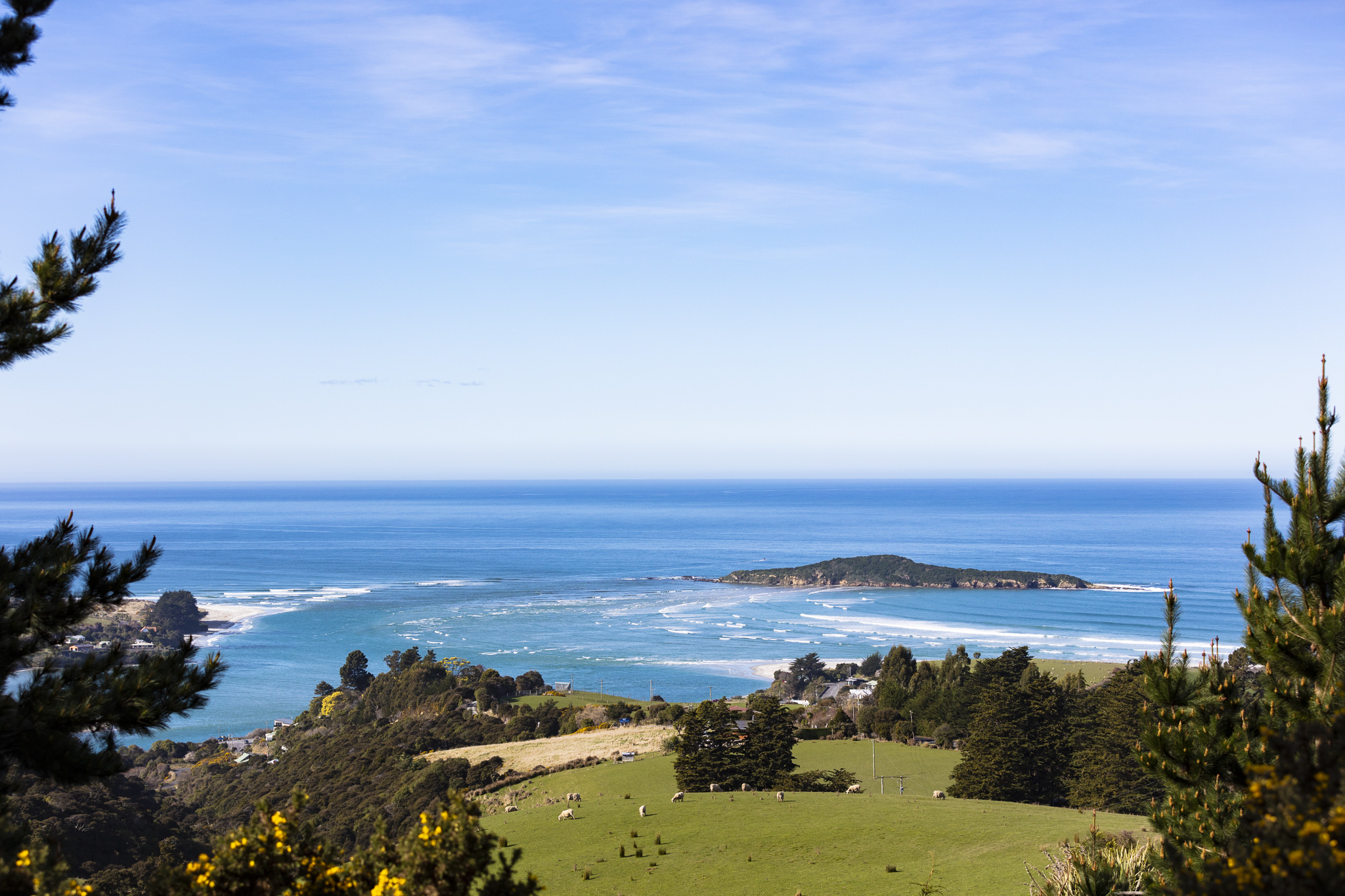
When I was a medical student, a retired general practitioner told me, “Forget what they teach you in medical school, son, medicine is 90% art and 10% science”. I resisted the temptation to call this crusty old bloke delusional and re-opened my textbook. His point stuck with me however, and the longer I am in this game the less senile this GP appears to be. We practice medicine after all.
As doctors we have our own graveyards that we stroll through from time-to-time, and this little two-year-old is buried front and centre. In all deaths you can’t help but what if … if only I’d been wiser, better trained, had more support, better resources even. Here though it felt different, the wound stayed open for longer.
It keeps me up at night. If only I’d been braver. I should have checked the underside of the boat. Maybe I was just scared. James would’ve got her out sooner. I didn’t know there was another victim, I never asked. It was terrifying, waves were breaking onto the boat, onto both the girls. I still can’t believe James got her out. I lie awake imagining how close I must have been to her when I first arrived. She could have been breathing, screaming for her life. I’m thankful for James’s bravery, Evie’s intuition and Michaela’s clarity, all in the face of death. We are bound in blood. I love them all.
We met the family a couple of weeks later. Seeing brother and sister running around, laughing and playing was a special moment. They are a beautiful family. Every so often I’d look towards the vigil of teddies and pictures they’d created on the sofa. The sense of loss hung in the air. The burden of guilt did lift though. I felt better.
Science can only take us so far in both life and medicine, there is something more and that was what that old GP was on to, the art. Not just in the way we treat our patients, but in the way we treat ourselves. And it is here that we truly find our medicine; to accept, forgive, learn and move on.
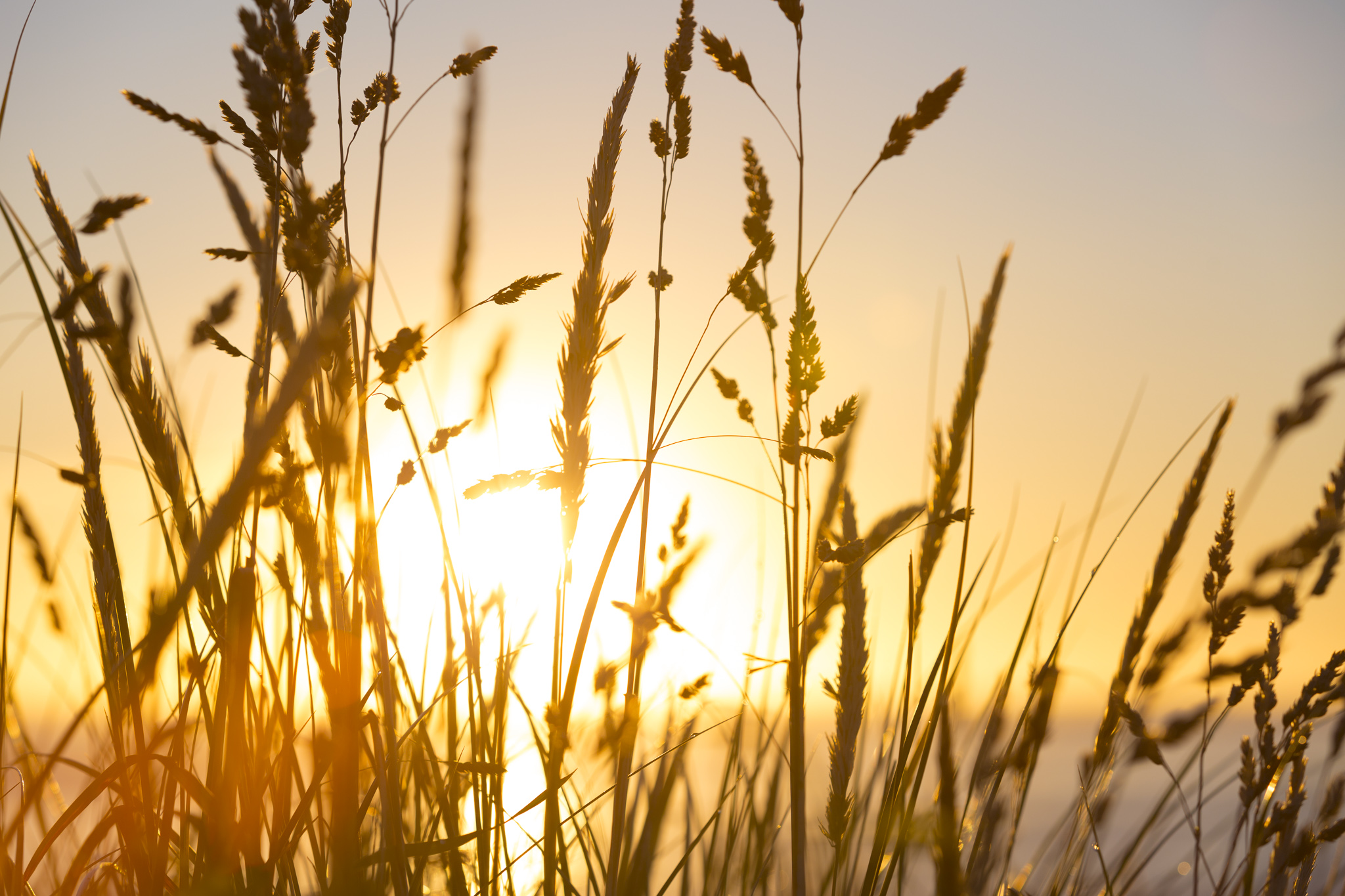
A 2014 study by the University of New South Wales conservatively estimated that the number of rescues conducted by Australian surfers each year is on par with the number conducted by volunteer surf lifesavers. As surfers and water enthusiasts we patrol beaches – crowded and remote – 365 days a year. We are custodians of the sea. Part of the joy of being a surfer is that intimate connection to wind, weather and tide. Cycling home from work I feel the wind on my face, it tells me what’s happening out there. I know the state of the tide and swell. I know about that little east swell due to fill in later that evening. I know the condition of the local sandbanks and what rip currents to use to save my arms. We are continually processing this live data and making decisions. We see things others don’t. A benign shore break to us is a freight train to someone else.
There is no substitute for professional expertise and timely extraction, but those first few moments can be the difference between life and death and a little bit of knowledge can go a long way, both as rescuer and victim. Remember, a quarter of all rescues from the NSW study were surfers rescuing other surfers.
There are no heroes at sea; know your limits. Stash a blanket in your boot and call for help.
